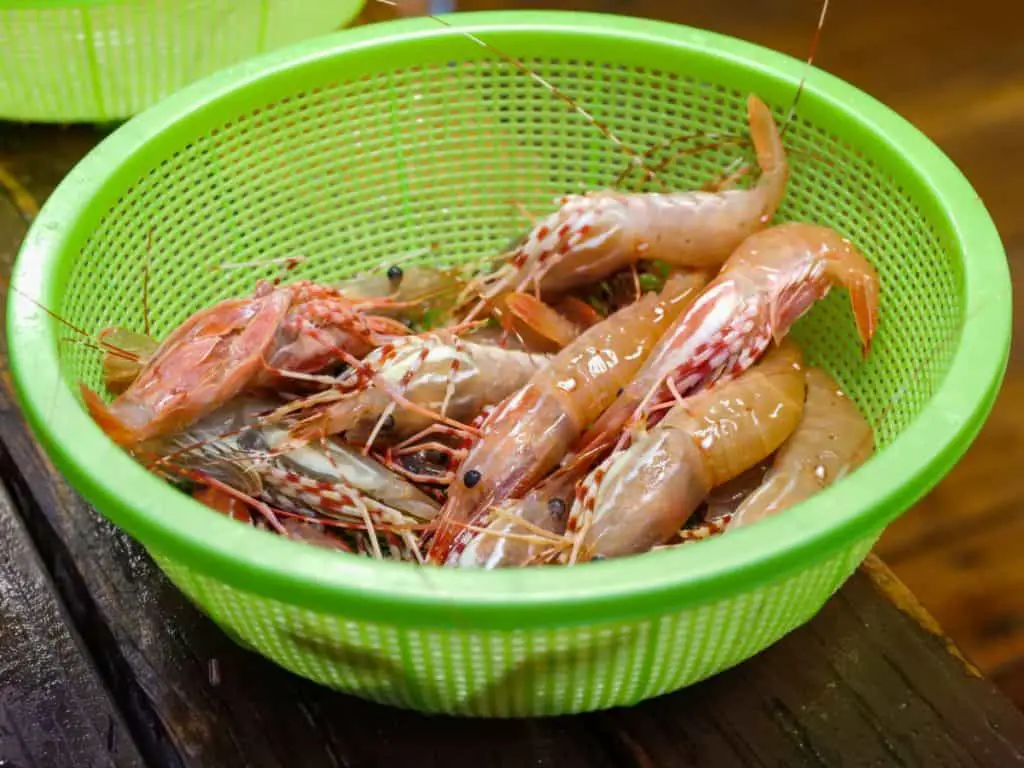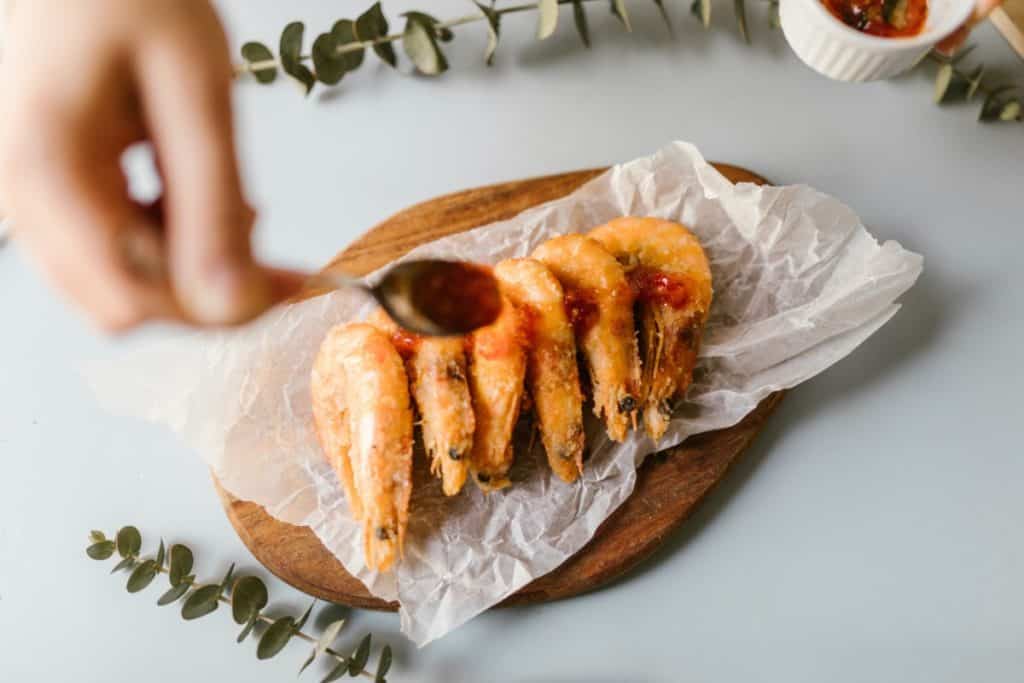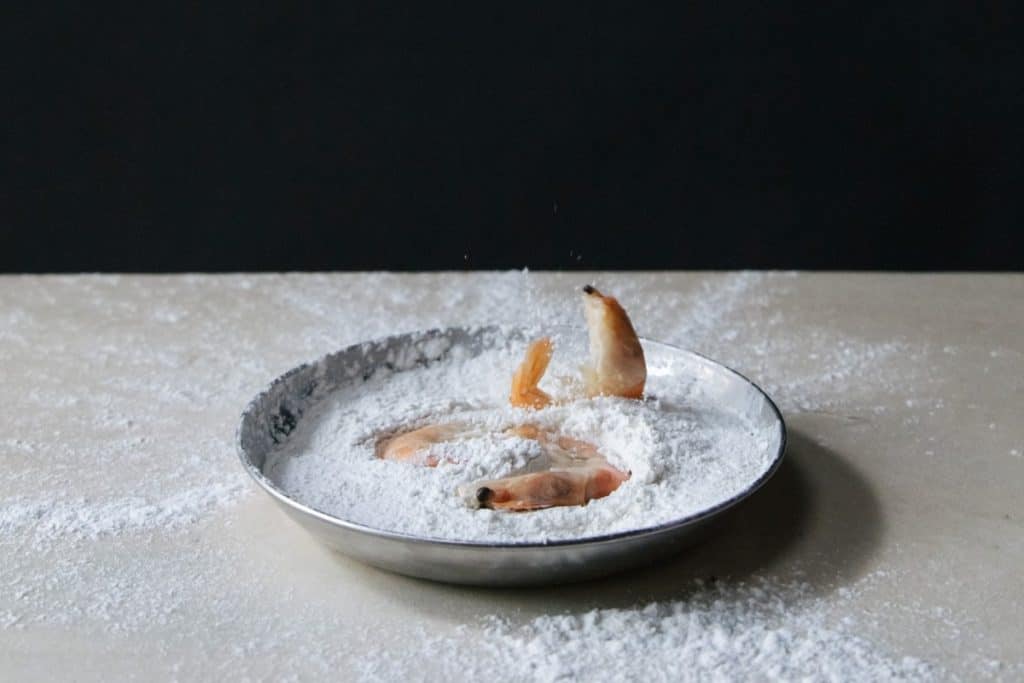
If you want to find out whether shrimp can be identified as producers, consumers, or decomposers then you’ve come to the right article!
As, in this article, I’ll share the answer to this question with you, and also after you’ve read the answer to the main question then I’ll continue answering a few more closely related questions as well to extend your knowledge even more.
I hope that you gain some new knowledge from this article!
Is a shrimp a producer, a consumer, or a decomposer?
Genuine shrimp are an order of crustaceans known as Caridea.
However, the term “shrimp” is a non-scientific term that’s often used in a general way to refer not only to true shrimp but also to other species, such as prawns, which resemble true shrimp.
All shrimp and shrimp-like species are consumers.
They are not producers or decomposers.
Producers are plants and algae species that convert inorganic nutrients and sunlight into energy to grow.
Primary consumers are organisms that eat producers.
By being consumed in this way, plants and other producers introduce usable energy into the food chain.
The energy they produce gets passed along at reduced rates to consumers that feed upon lower-level consumers.
Decomposers, on the other hand, are organisms that break down dead organisms.
Shrimp are omnivores that will eat pretty much anything that is available and that they can fit in their mouths.
Although shrimp often eat microorganisms as well as dead or decaying plant and animal matter, they are not considered decomposers.
Bacterial and fungal decomposers release enzymes that break down organic matter before consuming it, whereas shrimp and other scavengers digest dead and decaying matter by first consuming it.
Is a grass shrimp a producer, a consumer, or a decomposer?
Grass shrimp are sometimes referred to as skeleton shrimp, feeder shrimp, or ghost shrimp.
They are very small, typically only growing to about two inches in length, and are commonly kept in aquariums.
Like other shrimp, they are omnivorous consumers.
Even though they will eat decaying plants and animal matter, they are not considered decomposers.
Also, they’re not considered producers.
Is a brine shrimp a producer, a consumer, or a decomposer?
Brine shrimp are consumers.
The various species within the genus of brine shrimp mostly eat planktonic algae, but they are opportunistic feeders and will consume bacteria, other microorganisms, as well as decaying fish and insects.
Brine shrimp are a genus of aquatic crustaceans that can live in water with high salt content.
They are very small.
Females, which tend to be larger than males, will only grow to be less than half of an inch in length.
Although they often eat decaying fish, brine shrimp are not considered decomposers.
Decomposers release enzymes that break down organic matter before consuming it, whereas shrimp and other scavengers digest dead and decaying matter by first consuming it.
Brine shrimp are also not considered to be producers.
Is a freshwater shrimp a producer, a consumer, or a decomposer?
Freshwater shrimp such as cherry shrimp, bee shrimp, and snowball shrimp are consumers.
They are omnivorous scavengers that chiefly eat algae, bacteria, and decaying plant matter.
However, they will also scavenge dead aquatic organisms.
While decomposers also consume dead organic matter, the process through which they do so differs from consumers.
Genuine decomposers such as bacteria or fungi release enzymes that break down organic matter before consuming it.
Shrimp ingest dead organisms before breaking them down into usable energy.
Freshwater shrimp are also not considered to be producers.

Is a prawn a producer, a consumer, or a decomposer?
Like all shrimp and shrimp-like organisms, prawns are strictly consumers.
They are omnivores that eat a combination of plants and animal material.
They are neither producers nor decomposers.
Prawns are small crustaceans that are often called shrimp, but unlike genuine shrimp, they are not Caridea.
The term “prawn” had different meanings in various English-speaking countries.
In the United States, it is usually used to refer to freshwater shrimp, whereas in the United Kingdom it is used to refer to any shrimp that has commercial value.
Check out the video below if you want to see a prawn eat a goldfish.
Is a shrimp a primary consumer?
Shrimp are both primary and secondary consumers.
A primary consumer is an organism that eats producer organisms.
Secondary consumers are animals that will eat all the primary consumers.
As primary consumers, shrimp eat algae and plant matter.
However, since they are omnivorous and opportunistic feeders, they can eat decaying animal matter (mostly the meat of primary consumers), bacteria, and other small organisms.
For this reason, they are also secondary consumers.
Is a shrimp a secondary consumer?
Shrimp are secondary consumers since they eat or scavenge primary consumers, such as insects and small animals.
While they tend to chiefly subsist on algae and plant matter, shrimp are opportunistic feeders that will eat just about anything that they can swallow.
Is a shrimp a tertiary consumer?
Shrimp are not tertiary consumers.
They are very small and are typically only able to eat plants, algae, and small primary consumers.
They can, however, scavenge small particles of meat from almost any species, if it is available.
So, while a shrimp could eat bits of decaying flesh from a secondary consumer, this is an unusual exception and not the rule.
Tertiary consumers are organisms that characteristically consume secondary consumers.
Because they are higher on the food chain, tertiary consumers have larger bodies and, generally, must ingest greater amounts of food than secondary consumers.
Is a shrimp a quaternary consumer?
Shrimp are not quaternary consumers.
They are much too small.
Quaternary consumers are predators at the top of the food chain.
Quaternary consumers consume primary, secondary, and tertiary consumers.

Is a shrimp a herbivore?
Shrimp are not considered herbivores, even though they often eat plant material.
Herbivores are animals that primarily or exclusively consume plant matter, or vegetation, for sustenance.
There are very few species that are obligate herbivores, meaning that most herbivores can eat and digest animal protein, at least in small amounts.
Shrimp are opportunistic omnivores that will eat almost anything that they can fit in their mouths.
While their diet usually includes a significant amount of vegetation, they also eat smaller animals and decaying flesh.
Is a shrimp a carnivore?
Most shrimp are not considered carnivores because they have a diet that includes both plant and animal matter.
The mantis shrimp, however, is a small, carnivorous species.
They typically only grow to be about four inches long, but they can kill animals that are much larger than themselves, including crabs.
Check out the video below if you want to see a mantis shrimp destroy a clam.
Is a shrimp an omnivore?
Shrimp are mostly opportunistic feeders and so most shrimp species are technically omnivores.
The majority of the shrimp species survive on a plant-based and meat-based diet but there are exceptions to this rule.
As, for example, the mantis shrimp is a carnivorous shrimp species.

